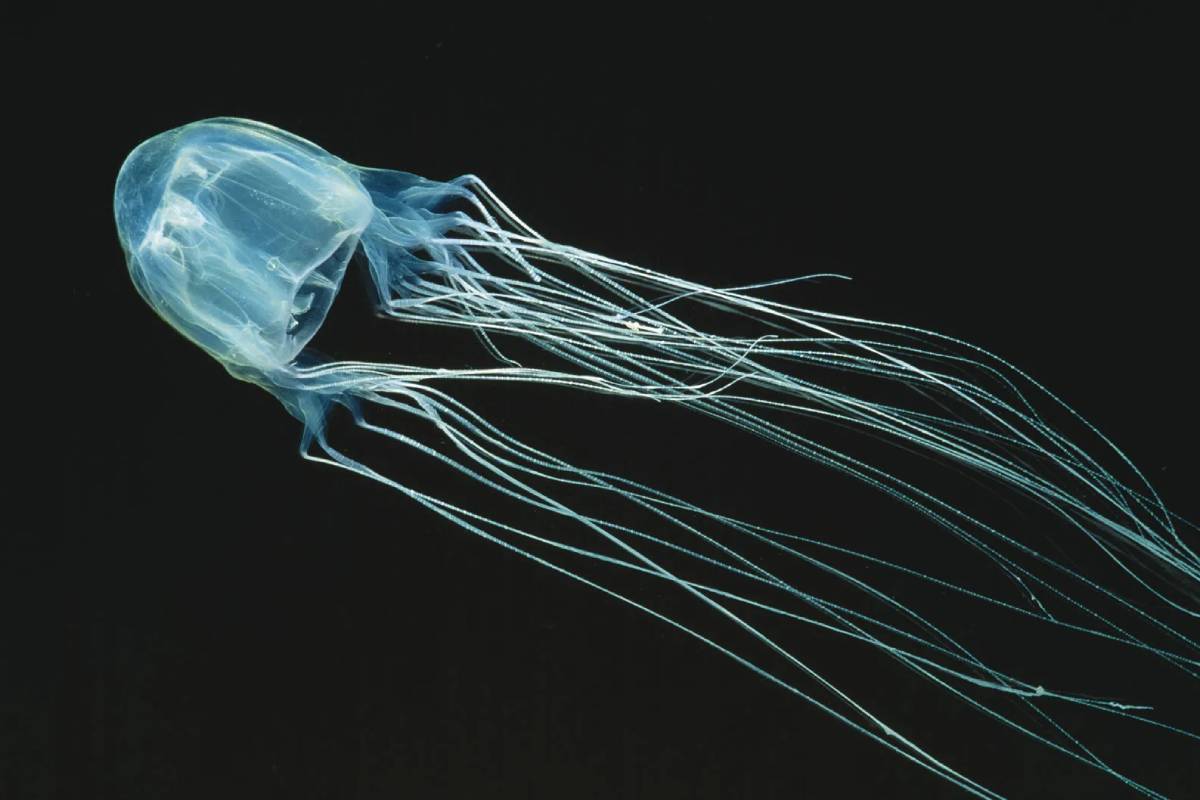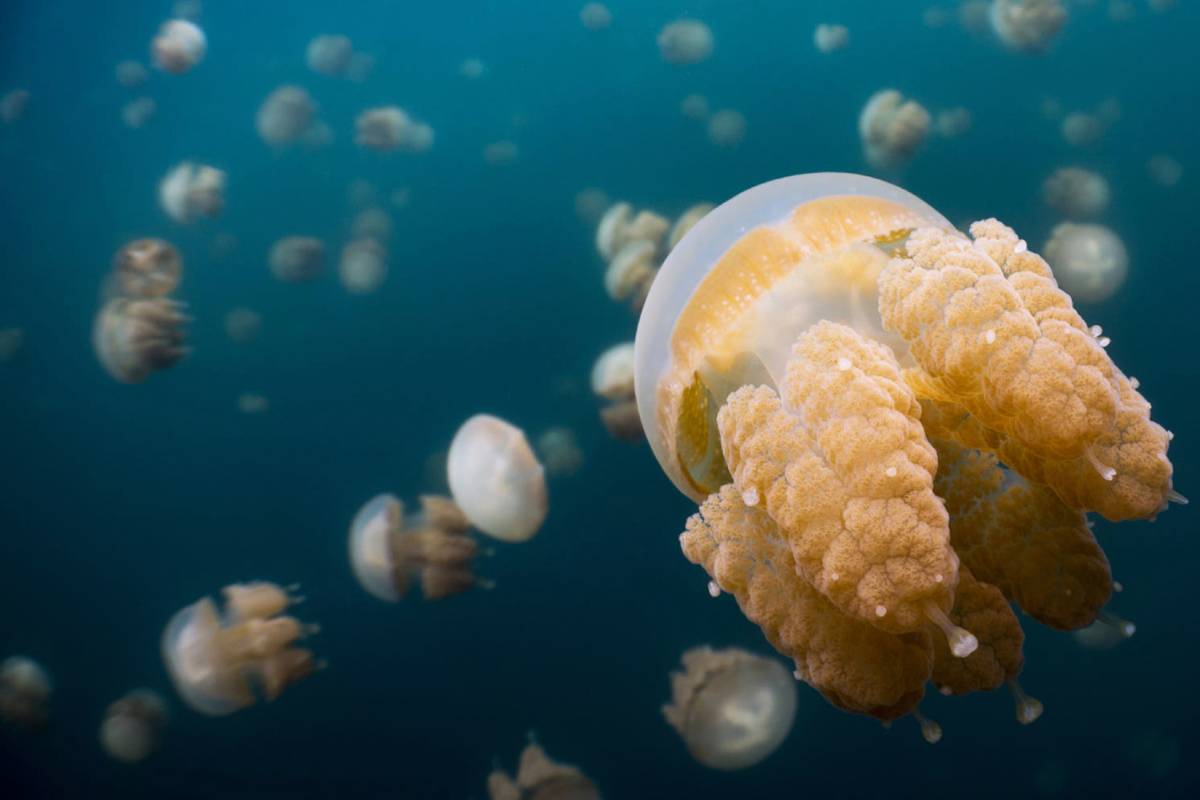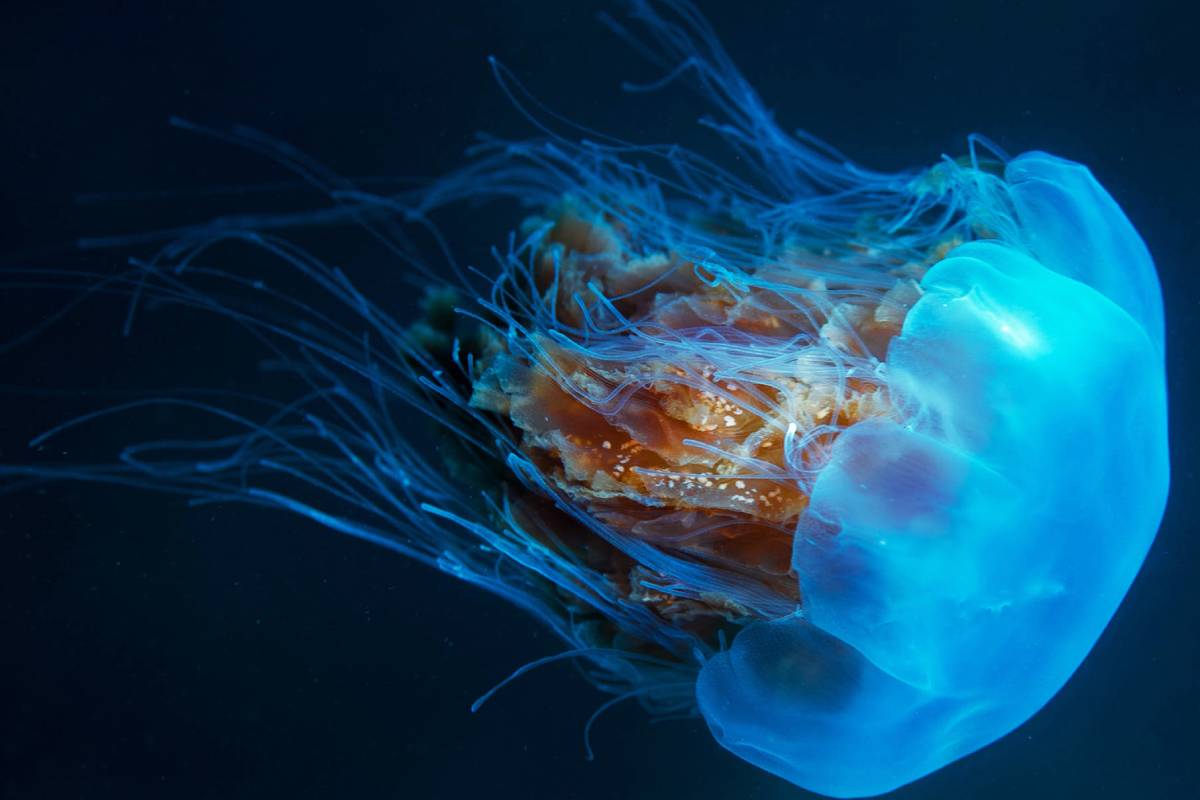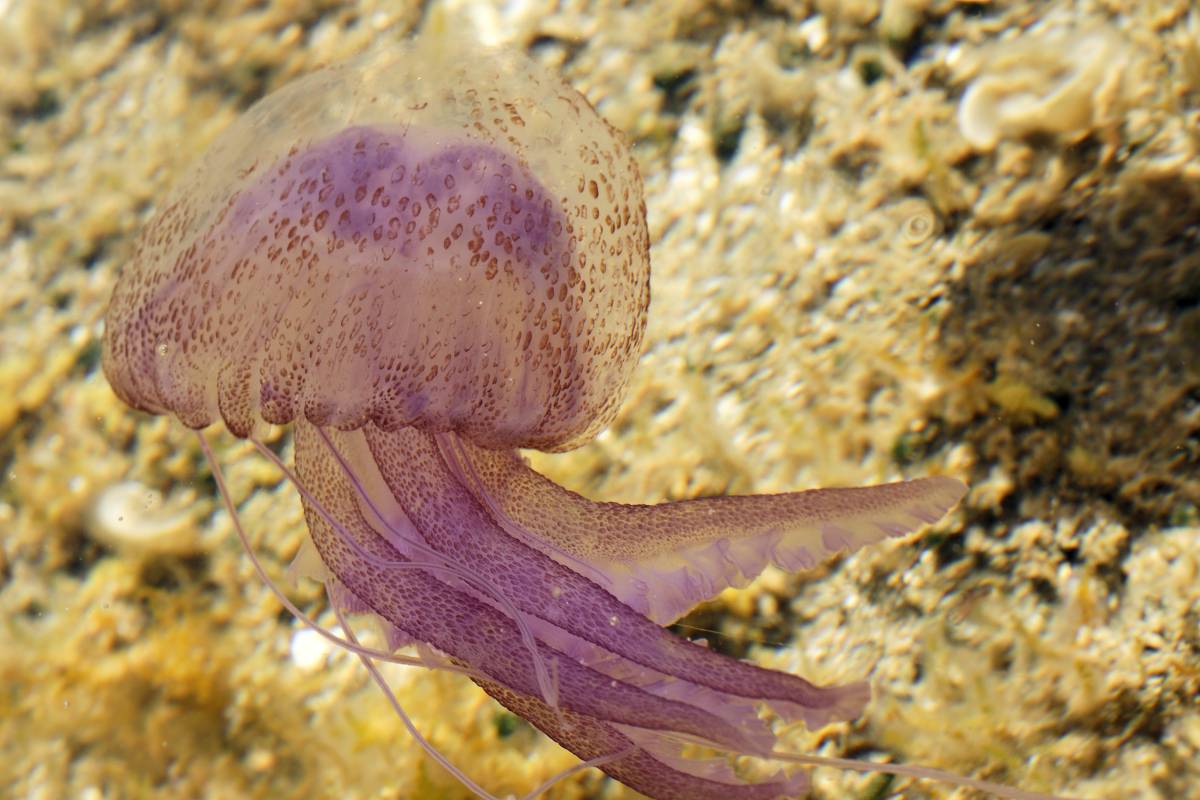The jellyfish season in Australia is a critical period for both locals and tourists, primarily due to the presence of some highly dangerous species s
The jellyfish season in Australia is a critical period for both locals and tourists, primarily due to the presence of some highly dangerous species such as the box jellyfish (Chironex fleckeri) and the Irukandji jellyfish (Carukia barnesi). The season’s timing varies across different parts of the country, but it generally coincides with the warmer months when ocean temperatures rise, creating favourable conditions for jellyfish to thrive.
In northern Australia, particularly along the coasts of Queensland, including the Sunshine Coast, and the Northern Territory, jellyfish season typically extends from November to May. During these months, the waters are warmer, which attracts various species of jellyfish closer to shore. The box jellyfish, known for its potentially fatal sting, is especially prevalent in this region.
Encounters with box jellyfish can cause severe pain, cardiovascular collapse, and even death if not treated promptly. Similarly, the Irukandji jellyfish, though much smaller in size, can cause Irukandji syndrome, which includes symptoms such as severe pain, nausea, and hypertension, and can also be fatal in extreme cases.
What is the prevention procedure in the jellyfish season?
To mitigate the risks associated with jellyfish stings, many beaches in northern Australia implement several safety measures during jellyfish season. These measures include the installation of stinger nets, which are designed to keep jellyfish out of designated swimming areas. Additionally, local authorities often provide vinegar at beach entrances, as it can be used to neutralize jellyfish venom on the skin. Beachgoers are also advised to wear protective clothing, such as stinger suits, which cover most of the body and reduce the risk of stings.
Lifeguards play a crucial role during jellyfish season by maintaining vigilance and providing immediate assistance in case of stings. They often post warning signs when jellyfish are present in the water and provide up-to-date information about the safety of swimming conditions. In regions where the risk of encountering dangerous jellyfish is particularly high, some beaches might even be closed to swimmers during peak season.
Outside of northern Australia, other regions, such as Western Australia and New South Wales, can also experience jellyfish blooms, although they are generally less frequent and less dangerous. However, swimmers should always remain cautious and informed about local jellyfish activity regardless of the region.
Overall, understanding the timing and risks associated with jellyfish season in Australia is essential for ensuring safety while enjoying the country’s beautiful coastal waters. Awareness and adherence to safety measures can significantly reduce the likelihood of harmful encounters, allowing beachgoers to enjoy their time in the ocean with peace of mind.
The common types of dangerous jellyfish in Australia

BLUEBOTTLE (Physalia physalis)
Common Names: Bluebottle, Portuguese man-o-war, Pacific man-o-war
Size and Appearance: The Bluebottle is characterized by an air-filled sac, which can reach up to 8cm in length. It usually has a single, long, blue main fishing tentacle hanging beneath it. This tentacle can contract to a few centimetres or extend to over 10 meters in length. Some Bluebottles may have numerous main fishing tentacles, all of which can cause painful stinging.
Distribution: Found throughout Australia and in most warm oceans worldwide.
First Aid
- Avoid rubbing the sting area.
- Blue tentacles may stick to the skin after a sting, which is distinctive for the Bluebottle. Remove any adhering tentacles.
- Rinse the affected area well with seawater (not fresh water).
- Place the sting area in hot water – make sure it’s no hotter than the rescuer can comfortably tolerate for 20 minutes.
- If the pain persists despite heat, or if hot water is not available, apply cold packs or ice in a dry plastic bag.
- Seek medical assistance if symptoms persist.

BOX JELLYFISH (Chironex fleckeri)
Common Names: Box jellyfish, sea wasp
Size and Appearance: The Box jellyfish is a large, almost transparent jellyfish with a box-shaped bell that can reach up to 38cm in diameter. It has up to 17 ribbon-like tentacles arising from each of the four corners. These tentacles can contract to about 10cm or extend up to 3m in length.
Distribution: Found in shallow, tropical Australian waters north of Agnes Water, Queensland, throughout Northern Territory waters, and along the Western Australia coast south to Exmouth. Stings from Chironex jellyfish are most common in coastal areas.
First Aid
- A sting from a Box jellyfish causes immediate severe burning pain and leaves whip-like marks, often with tentacles remaining on the affected area. Severe stings can lead to breathing difficulties and cardiac arrest.
- If safe, remove the casualty from the water.
- Follow the DRSABCD protocol (Danger, Response, Send for help, Airway, Breathing, CPR, Defibrillation).
- If the casualty has more than one localized single sting or appears unwell, call emergency services (dial triple zero – 000) and seek assistance from a lifeguard if available.
- Assess the casualty and start CPR immediately if needed.
- If possible, treat the sting by pouring vinegar over the affected area for at least 30 seconds, then carefully pick off the tentacles.
- If vinegar is unavailable, pick off the tentacles (this is not harmful to the rescuer) and rinse the area well with seawater. Apply a cold pack or ice in a bag for pain relief.
- Antivenom is available for Chironex fleckeri and other multi-tentacled box jellyfish stings at hospitals and ambulance stations in tropical coastal areas.
- Casualties who initially appear stable but develop severe symptoms within the next 30 minutes may be suffering from Irukandji syndrome and require urgent medical attention.

IRUKANDJI (Carukia barnesi)
Common Name: Irukandji
Size and Appearance: The Irukandji is a small, transparent box jellyfish, typically 1-2cm in diameter, and is often not easily seen. Some individuals may grow up to 10cm long.
Distribution: Found in tropical Australian waters north of southern Fraser Island in Queensland, throughout Northern Territory waters, and along the Western Australia coast south to Exmouth.
First Aid
- Irukandji jellyfish cause a minor skin sting initially, followed by severe generalized muscular pain, headache, vomiting, and sweating 5-40 minutes later. In some cases, the sting can result in very high blood pressure or affect the heart, which may be life-threatening. These symptoms are collectively known as Irukandji Syndrome.
- Due to the delayed onset of symptoms, all tropical jellyfish stings should be treated with vinegar. The affected person should be kept out of the water, in a safe location, and monitored for 45 minutes.
- If safe, remove the casualty from the water.
- Follow the DRSABCD protocol (Danger, Response, Send for help, Airway, Breathing, CPR, Defibrillation).
- Call for help by dialling triple zero (000) for an ambulance.
- Treat the sting by pouring vinegar liberally over the affected area for at least 30 seconds.
- Monitor the casualty closely and seek assistance from a lifeguard if available.

BLUBBER (Catostylus mosaicus)
Common Name: Blubber
Size and Appearance: Blubber jellyfish have a mushroom-shaped bell ranging from 5 to 30cm in diameter. They are creamy white to brown in color (blue if found further north). Unlike some jellyfish, they do not have tentacles but instead have eight ‘fronds’ or ‘frills’ hanging underneath. Their sting typically causes minor skin irritation.
Distribution: The Australian species of blubber jellyfish are found in Queensland, Victoria, and New South Wales, extending into South East Asia.
First Aid
- If safe, remove the casualty from the water.
- Follow the DRSABCD protocol (Danger, Response, Send for help, Airway, Breathing, CPR, Defibrillation).
- Wash the affected area with seawater (not fresh water).
- Keep the casualty at rest and reassure them.
- Avoid rubbing the sting area.
- Place the casualty’s stung area in hot water (as hot as they can stand) for 20 minutes.
- If local pain persists despite heat, or if hot water is not available, apply a cold pack or ice in a bag.
- Seek medical assistance if symptoms persist or if the sting covers a sensitive area (e.g., the eyes), and seek assistance from lifeguards if available.

MORBAKKA (Morbakka fenneri)
Common Names: Fire Jelly, Moreton Bay Stinger
Size and Appearance: The Morbakka jellyfish has a large transparent box-shaped bell with one tentacle in each corner. The bell can measure 6-18cm wide, with four thick, ribbon-shaped tentacles that may reach up to 1m in length.
Distribution: Found in tropical Australian waters, along all Queensland and northern New South Wales coasts, and often encountered as an open water jellyfish. Sub-species are more commonly found at Mackay, Moreton Bay, and northern New South Wales.
First Aid
For Tropical Australia – North of Agnes Water:
- Remove the casualty from the water if it’s safe to do so.
- Follow the DRSABCD protocol (Danger, Response, Send for help, Airway, Breathing, CPR, Defibrillation).
- If the casualty has more than one localized single sting or appears unwell, call triple zero (000) and seek assistance from a lifeguard if available.
- Liberally douse the stung area with vinegar for 30 seconds. If vinegar is unavailable, rinse the sting well with seawater.
- Apply a cold pack or ice in a dry plastic bag for pain relief. Do not apply freshwater directly onto the sting.
- Monitor the casualty for 45 minutes as they may experience Irukandji Syndrome.
For Non-tropical Regions – South of Agnes Water:
- Rinse the sting well with seawater.
- Place the stung area in hot water for 20 minutes.
- If local pain persists despite heat, or if hot water is not available, apply a cold pack or ice in a dry plastic bag.
- If the pain persists, is generalized, or if the sting area is large or involves sensitive areas (e.g., the eyes), dial triple zero (000) and seek assistance from lifeguards if available.

SNOTTIE (Cyanea sp.)
Common Names: Hair jelly, Snottie, Lion’s mane
Size and Appearance: The Snottie jellyfish has a large, flat bell that can reach up to half a meter in diameter, with a prominent ‘mop’ of fine hairlike tentacles measuring 5-100cm long. The top of the bell is often white or brown, while the underside may be yellow, brown, or reddish in colour.
Distribution: Found throughout Australia.
First Aid
- The sting of the Snottie jellyfish causes immediate severe burning pain and leaves whip-like marks, often with tentacles remaining on the affected area. Severe stings can lead to breathing difficulties and cardiac arrest.
- If safe, remove the casualty from the water.
- Follow the DRSABCD protocol (Danger, Response, Send for help, Airway, Breathing, CPR, Defibrillation).
- Remove any adhering tentacles.
- Wash the affected area with seawater (not fresh water).
- Place the casualty’s stung area in hot water (no hotter than the rescuer can comfortably tolerate) for 20 minutes.
- If local pain persists despite heat or if no hot water is available, apply a cold pack or ice in a dry plastic bag.
- If the pain persists and the sting area is large or involves sensitive areas (e.g., the eyes), dial triple zero (000) and seek assistance from lifeguards if available. Administer CPR if required.
- Since Cyanea is found in tropical areas and may be difficult to identify, there is a risk that the sting is from a potentially lethal jellyfish. Therefore, the priority is to preserve life by treating the casualty with vinegar.
- Outside the tropics, where a large number of non-life-threatening stings occur, the primary objective is pain relief with heat or cold.

JIMBLE (Carybdea rastoni)
Common Name: Jimble
Size and Appearance: The Jimble jellyfish has a transparent bell measuring 1.5-3cm in diameter with four tentacles, one in each corner, ranging from 5-15cm long.
Distribution: Found throughout Australia, but most commonly observed in South Australia, Western Australia, and southern New South Wales.
First Aid
- If safe, remove the casualty from the water.
- Follow the DRSABCD protocol (Danger, Response, Send for help, Airway, Breathing, CPR, Defibrillation).
- Remove any adhering tentacles.
- Wash the affected area with seawater (not fresh water).
- Place the casualty’s stung area in hot water (as hot as they can stand) for 20 minutes.
- If local pain persists despite heat or if hot water is not available, apply a cold pack or ice in a bag.
- If the pain persists or becomes generalized, or if the sting area is large or involves sensitive areas (e.g., the eyes), dial triple zero (000) and seek assistance from lifeguards if available.

LITTLE MAUVE STINGER (Pelagia noctiluca)
Common Name: Little Mauve Stinger
Size and Appearance: The Little Mauve Stinger is a small mushroom-shaped jellyfish, typically ranging from 2-6cm in diameter. Unlike most jellyfish, its bell is covered with numerous wart-like lumps containing stinging capsules called nematocysts. The bell is usually pink or mauve, with 8 pale brown tentacles measuring 10-30cm in length.
Distribution: Common in Australian waters, with occasional large swarms invading the Sydney region.
First Aid
- Remove any adhering tentacles.
- Wash the affected area with seawater (not fresh water).
- Place the casualty’s stung area in hot water, making sure it’s no hotter than the rescuer can comfortably tolerate, for 20 minutes.
- If the pain persists despite heat or if hot water is not available, apply a cold pack or ice in a dry plastic bag.
- Seek medical assistance if symptoms persist.
Final thought
Marine stingers can be found year-round in tropical Queensland, but the risk of encountering two types of potentially dangerous jellyfish is higher during the ‘marine stinger season,’ which usually spans from November to May.
It’s crucial to swim only at patrolled beaches under the guidance and supervision of lifesavers and lifeguards, especially during these warmer months.